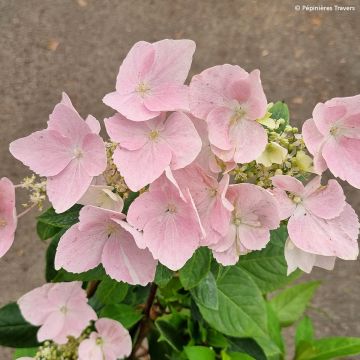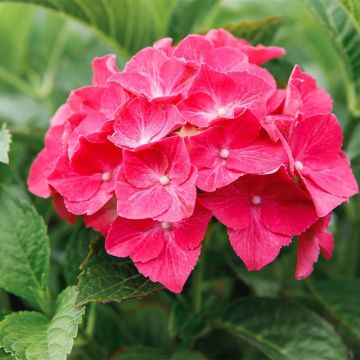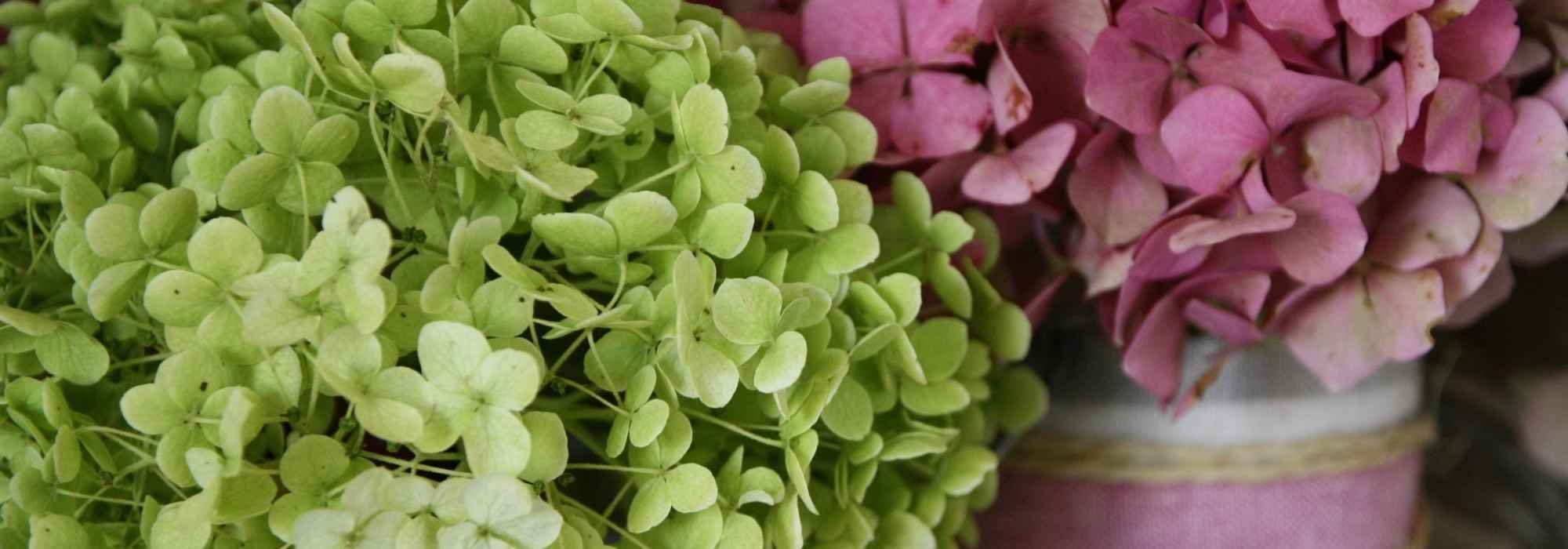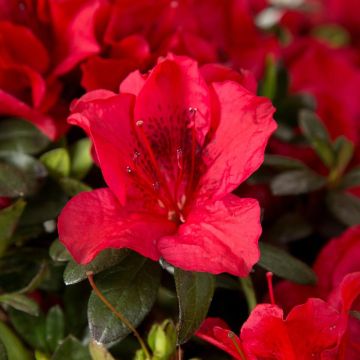

Hydrangea macrophylla Cloudi


Hydrangea macrophylla Cloudi


Hydrangea macrophylla Cloudi
Hydrangea macrophylla Cloudi
Hydrangea macrophylla Cloudi®
Bigleaf Hydrangea, French Hydrangea
young plant received in good condition
Béatrice, 06/11/2022
Special offer!
Receive a €20 voucher for any order over €90 (excluding delivery costs, credit notes, and plastic-free options)!
1- Add your favorite plants to your cart.
2- Once you have reached €90, confirm your order (you can even choose the delivery date!).
3- As soon as your order is shipped, you will receive an email containing your voucher code, valid for 3 months (90 days).
Your voucher is unique and can only be used once, for any order with a minimum value of €20, excluding delivery costs.
Can be combined with other current offers, non-divisible and non-refundable.
Home or relay delivery (depending on size and destination)
Schedule delivery date,
and select date in basket
This plant carries a 24 months recovery warranty
More information
We guarantee the quality of our plants for a full growing cycle, and will replace at our expense any plant that fails to recover under normal climatic and planting conditions.
Would this plant suit my garden?
Set up your Plantfit profile →
Description
Hydrangea macrophylla 'Cloudi' is a variety with relatively flat inflorescences, quite different from the large usual heads observed in this type of hydrangea. Its summer flowering spreads over several months, from July-August to September-October. Its pastel flowers, blue in acidic soil or pink in neutral to slightly alkaline soil, give it an undeniable romantic charm. Medium-sized, this beautiful, easy-going bush will be happy in semi-shaded areas, isolated, or in the heart of a mixed bed.
Hydrangea macrophylla is a deciduous bush, native to Japan, where its beauty has been appreciated for centuries and mentioned in poems dating back to the 8th century! Festivals are even dedicated to this bush. It can be found growing wild on the island of Honshu (which is home to the capital Tokyo), and it was introduced to Europe around 1789. It belongs to the Hydrangeaceae family.
According to some sources, 'Cloudi' is the result of cross-breeding between Hydrangea macrophylla and H. serrata, which would explain the relatively flat shape of the flower, as well as its preference for wet soils. It is a variety that produces beautiful pastel blue inflorescences in acidic soil, turning pale-pink in neutral to slightly alkaline soil, clearly visible on the medium green mass of foliage which they almost completely cover. In summer, it blooms for many weeks, between July and September. Its inflorescences consist of very narrow and very tight fertile flowers in the centre, and sterile florets of a larger surface on the periphery, the whole recalling certain flowers of Viburnum. This particular morphology combined with the softness of the colouring gives a romantic aspect to this variety. A medium-sized bush, about 1.2m (4ft) high and wide, it has an average growth of 15 to 25cm (6 to 10in) per year. Its dimensions can easily be contained by annual pruning. Like all Hydrangea macrophylla, this bush is not a strictly ericaceous plant. It prefers neutral to acidic soils, while tolerating a bit of limestone.
'Cloudi' arouses emotion with its pastel colour and graceful flowers. You can plant it isolated under the light shade of large trees, but it will also be valuable in mixed beds of acidic-soil plants. Choose plants with staggered flowering throughout the year to frame that of 'Cloudi'. In a romantic register, plant it with a botanical camellia like C. transnokoensis, with charming little white flowers appearing in late winter and early spring. The purple pink single flowers of Magnolia 'Susan' will then take over, closely followed by those of Kalmias, mountain laurels with original small white, pink or red flowers, depending on the variety.
Hydrangea macrophylla Cloudi in pictures


Plant habit
Flowering
Foliage
Botanical data
Hydrangea
macrophylla
Cloudi®
Hydrangeaceae
Bigleaf Hydrangea, French Hydrangea
Cultivar or hybrid
Other Hydrangea Macrophylla
View all →Planting and care
Plant in spring or early autumn, preferably in a semi-shaded position, for example against an east-facing, or even north-facing wall. In very cold regions, it may be wise to protect its stump with a thick mulch. Keep it protected from cold and drying winds. It does not require ericaceous soil, but appreciates deep, moist but well-drained, fairly fertile soil, possibly enriched with a good base fertiliser before planting. It can tolerate some limestone. In slightly limestone (alkaline) soil, dig a hole 70 to 80cm (28 to 32in) in all directions, and mix the in-situ soil with 1/3 ericaceous soil and 1/3 compost.
If planting near a wall and the soil is dry at its base, place the root ball at least 30 to 40cm (12 to 16in) away from it and incorporate a quantity of well-decomposed compost to better retain moisture in the soil.
After planting, watch out for slugs which are quite fond of young leaves.
Very hardy, it is not afraid to be planted in cold regions.
Water regularly in hot periods to prevent the foliage from wilting during dry spells.
Planting period
Intended location
Care
Planting & care advice
-
, onOrder confirmed
Reply from on Promesse de fleurs
Similar products
Haven't found what you were looking for?
Hardiness is the lowest winter temperature a plant can endure without suffering serious damage or even dying. However, hardiness is affected by location (a sheltered area, such as a patio), protection (winter cover) and soil type (hardiness is improved by well-drained soil).

Photo Sharing Terms & Conditions
In order to encourage gardeners to interact and share their experiences, Promesse de fleurs offers various media enabling content to be uploaded onto its Site - in particular via the ‘Photo sharing’ module.
The User agrees to refrain from:
- Posting any content that is illegal, prejudicial, insulting, racist, inciteful to hatred, revisionist, contrary to public decency, that infringes on privacy or on the privacy rights of third parties, in particular the publicity rights of persons and goods, intellectual property rights, or the right to privacy.
- Submitting content on behalf of a third party;
- Impersonate the identity of a third party and/or publish any personal information about a third party;
In general, the User undertakes to refrain from any unethical behaviour.
All Content (in particular text, comments, files, images, photos, videos, creative works, etc.), which may be subject to property or intellectual property rights, image or other private rights, shall remain the property of the User, subject to the limited rights granted by the terms of the licence granted by Promesse de fleurs as stated below. Users are at liberty to publish or not to publish such Content on the Site, notably via the ‘Photo Sharing’ facility, and accept that this Content shall be made public and freely accessible, notably on the Internet.
Users further acknowledge, undertake to have ,and guarantee that they hold all necessary rights and permissions to publish such material on the Site, in particular with regard to the legislation in force pertaining to any privacy, property, intellectual property, image, or contractual rights, or rights of any other nature. By publishing such Content on the Site, Users acknowledge accepting full liability as publishers of the Content within the meaning of the law, and grant Promesse de fleurs, free of charge, an inclusive, worldwide licence for the said Content for the entire duration of its publication, including all reproduction, representation, up/downloading, displaying, performing, transmission, and storage rights.
Users also grant permission for their name to be linked to the Content and accept that this link may not always be made available.
By engaging in posting material, Users consent to their Content becoming automatically accessible on the Internet, in particular on other sites and/or blogs and/or web pages of the Promesse de fleurs site, including in particular social pages and the Promesse de fleurs catalogue.
Users may secure the removal of entrusted content free of charge by issuing a simple request via our contact form.
The flowering period indicated on our website applies to countries and regions located in USDA zone 8 (France, the United Kingdom, Ireland, the Netherlands, etc.)
It will vary according to where you live:
- In zones 9 to 10 (Italy, Spain, Greece, etc.), flowering will occur about 2 to 4 weeks earlier.
- In zones 6 to 7 (Germany, Poland, Slovenia, and lower mountainous regions), flowering will be delayed by 2 to 3 weeks.
- In zone 5 (Central Europe, Scandinavia), blooming will be delayed by 3 to 5 weeks.
In temperate climates, pruning of spring-flowering shrubs (forsythia, spireas, etc.) should be done just after flowering.
Pruning of summer-flowering shrubs (Indian Lilac, Perovskia, etc.) can be done in winter or spring.
In cold regions as well as with frost-sensitive plants, avoid pruning too early when severe frosts may still occur.
The planting period indicated on our website applies to countries and regions located in USDA zone 8 (France, United Kingdom, Ireland, Netherlands).
It will vary according to where you live:
- In Mediterranean zones (Marseille, Madrid, Milan, etc.), autumn and winter are the best planting periods.
- In continental zones (Strasbourg, Munich, Vienna, etc.), delay planting by 2 to 3 weeks in spring and bring it forward by 2 to 4 weeks in autumn.
- In mountainous regions (the Alps, Pyrenees, Carpathians, etc.), it is best to plant in late spring (May-June) or late summer (August-September).
The harvesting period indicated on our website applies to countries and regions in USDA zone 8 (France, England, Ireland, the Netherlands).
In colder areas (Scandinavia, Poland, Austria...) fruit and vegetable harvests are likely to be delayed by 3-4 weeks.
In warmer areas (Italy, Spain, Greece, etc.), harvesting will probably take place earlier, depending on weather conditions.
The sowing periods indicated on our website apply to countries and regions within USDA Zone 8 (France, UK, Ireland, Netherlands).
In colder areas (Scandinavia, Poland, Austria...), delay any outdoor sowing by 3-4 weeks, or sow under glass.
In warmer climes (Italy, Spain, Greece, etc.), bring outdoor sowing forward by a few weeks.



























































